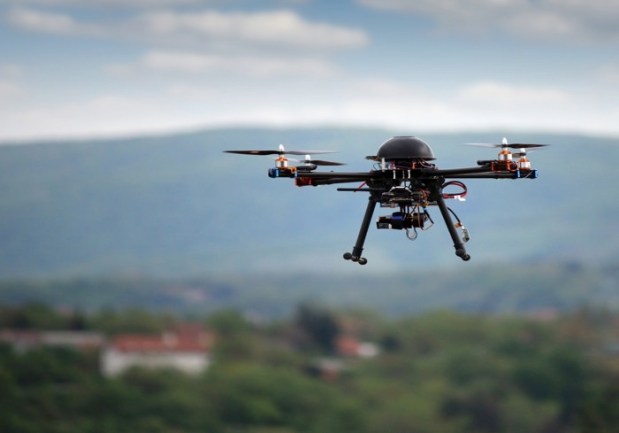Can Amazon’s Drones Brave Winter Storms?

Though millions of Americans aren’t even a week removed from marveling at how lucky they must be to enjoy 70 degree temperatures on Christmas Day, Old Man Winter was evidently listening and didn’t like what he heard one bit. Not only has the Northeast been hit by a mix of snow and icy rain, but catastrophic flooding has all but crippled parts of the Midwest. Aside from the human cost of this most recent spat of inclement winter weather, flights, trucks and more have all been thrown off schedule, and both FedEx and UPS have alerted customers across the country to expect moderate delays on their deliveries, according to Internet Retailer.
As 2015 turns into 2016, though, what makes Amazon think that its drone delivery program will be able to brave winter weather any better than cargo planes and delivery vans?
The retailer certainly captured the public’s imagination for what could be with a late 2015 promotional video showcasing the updated design and functionality of its as-yet-unapproved drones, but now that winter has returned with a vengeance, it’s hard not to see the small flying devices getting battered by crosswinds and clocked repeatedly by dime-sized hail. The Wall Street Journal explained that Amazon has been hard at work trying to address the problem but to no avail yet. ADS-B, a flight tracking system that allows drones to automatically avoid other commercial aircraft, has been bandied about as a way for the drones to avoid potentially dangerous weather patterns, but that hardly helps in the case of week-long weather events, like blizzards, sustained rains or worse.
When Amazon first announced its drone program several years ago, meteorologists at The Weather Channel broke down just what might happen to the most expertly designed drones once Jack Frost starts dropping temperatures and hurling ice chunks around the atmosphere.
“Weather will pose an interesting challenge for Amazon’s drones,” Meteorologist Jon Erdman said. “The craft would have to be resistant to ice buildup and presumably would not fly in thunderstorms, heavy rain or snow. Furthermore, strong winds, even on an otherwise clear day, would lash the small craft.”
While keeping the drones airborne in winter storms is a matter of aerodynamics, maintaining suitable temperatures for products carried inside the drones seems an even more daunting challenge. Erdman explained that the carrying compartment must be air- and water-tight so sensitive items don’t arrive waterlogged and partially frozen by low-altitude winter air. However, if drones don’t come with temperature-controlled carrying compartments, Erdman doubted whether products like groceries and delicate electronics could even be shipped via air during the winter months.
And if even one significant and popular product vertical is omitted from Amazon’s cutting-edge drone delivery program for four, five or six months out of the year, it could be enough to hamstring an ambitious program that skittish shoppers need to be coaxed into using anyway.
There is some hope, though, but it might not come from retail at all. Though Amazon’s drones might be one of the most high-profile uses of the flying device, the Chicago Tribune reported that Aerosense Inc., a Tokyo-based drone development startup, will be sending high-performance drones to government authorities for use in disaster zones. Capable of delivering emergency relief supplies to locations more than 62 miles away, the more robust designs could handle high winds and heavy snow that lower-priced models cannot. And while storing supplies in temperature-controlled compartments might be a bit too luxurious for emergency relief scenarios, the drones’ top speed of 62 miles per hour should be able to get its cargo wherever it needs to go before winter temperatures can wreak too much havoc.
Of course, outfitting drones with more advanced equipment that can withstand winter’s inevitable wrath then makes drone delivery a cost-benefit decision. Will customers pay for the privilege of an armored, jet-powered drone facilitating one-hour deliveries during a blizzard, or will inclement winter weather keep drones flying under fairer skies until a more affordable airborne option is found?
